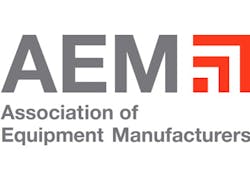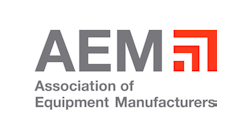TALENT DEVELOPMENT TIPS: HOW TO ATTRACT, TRAIN AND RETAIN YOUR BEST EMPLOYEES
Acquiring, training and retaining top-level employees is a tall task for organizations of all types and sizes. Much is made about companies “winning the talent war,” and it’s no surprise why. Simply stated, how effective an organization is at finding, developing and managing its workforce often ends up being the difference between whether it can be a top-notch company, or simply a marginally successful one.
Statistics suggest 70 percent of employees are disengaged today, and it’s costing companies somewhere between $450 billion and $550 billion per year in lost productivity. Organizations are paying too high a price, and it’s clear far too many don’t have enough talent (or, even worse, don’t have the right talent) to achieve operational goals and generate value for their customers.
“We’re all pieces on a chessboard, and it’s all about moving the pieces around and putting them in the proper places – and it happens by getting the right people in the right company cultures where they can really thrive and make a difference,” said Kristie Stern, managing partner for AEM service member company Green Mountain Lion Corporation, a management recruitment firm for equipment industries.
TALENT DEVELOPMENT – WHERE TO START
Every successful initiative starts with a well-reasoned, properly defined and actionable strategy in place to foster progress and drive results. And any strategy related to talent acquisition, development and retention require key stakeholders within companies to ask – and definitively answer – some tough questions:
- What are we trying to accomplish organizationally?
- Does everyone within our company understand – and are they committed to – where things are headed?
- Are the roles within our organization clearly defined enough?
- Are our key performance indicators (KPIs) aligned with the strategy we want to put place?”
- Are we customer-focused or revenue-focused?
“Because those companies that focus on customers, the revenue follows,” said Stern.
It’s also critical for organizations of all types and sizes to conduct a skills analysis of their employees. And while what data they collect is important, what matters most if what a company does with the information they glean from its analysis. Oftentimes, steps include:
- Developing career plans for employees interested in moving up
- Engaging in succession planning
- Facilitating employee training opportunities
“Whatever that might be, though, you need to finish what you start,” said Stern.
And the primary consequence of failing to properly develop and execute a strategy related to talent acquisition, development and retention? It’s a significant one, and organizations simply can’t afford to overlook it.
“You simply aren’t going to have the right match for a job, and you are going to have a short tenure (for the employee),” said Doug Griffin, principal for the Context Network, an AEM service member company and a provider of business management and strategy consulting services to the world’s leading agriculture companies. “He or she is probably going to leave, and then you’re going to have to start all over again.”
According to Griffin, products in today’s modern world are becoming more and more commoditized all the time. And opportunities for organizations to provide value and differentiation over their competitors more often than not come via the uniquely valuable services they can provide.
“So it’s essential that employees can provide a level of service that you need,” he continued. “The employees themselves become such a critical part of the delivery, whether it’s through a customer, or whether it’s through a dealer, or whether it’s through a client.”
THE GENERATION GAP
Four generations currently comprise the vast majority of the workforce of today: Baby Boomers, Generation X, millennials and Generation Y. And while they’re all uniquely valuable in their own ways, it almost goes without saying they’re incredibly different. Employers have to understand – and more importantly – accept that fact in order to be able to effectively attract, develop and retain their workforce.
“The company that can bridge the gap and create a culture where multiple generations can work together, that’s going to be the winning company,” said Stern.
Older generations – specifically the Baby Boomer generation – possess an incredible amount of tribal knowledge and experience, more so than all of the other generations combined. Conversely, Generation Y has been raised in an era of defined by the internet and social media, and its members communicate with the world in an entirely different way than their counterparts in the workforce. In between are Generation X and millennials, the latter of which has long been the subject of much debate, discourse and analysis.
“Millennials – they’re having the toughest time,” said Stern. “Where they work matters. And when you talk about talent, I think you have to consider what intrinsically motivates people. It’s apparent in millennials that, if they don’t believe in a company, they don’t believe in the mission or the strategy, and if they don’t feel empowered, you’re not going to find that same performance.”
More so than older employees, young members of the workforce are more concerned about receiving regular feedback, guidance and praise. More than anything else, this means employers must recognize the days of annual performance appraisals as the primary means of employee evaluation have long since passed.
“I think to some extent that’s true for all of us, though,” said Stern. “We all want to think you hired us because we’re good at what we do, you empower us because we’re good at what we do, and I think when you do that with people, they’ll move mountains for you.”
LEADERSHIP MEANS EVERYTHING
Company leadership is crucial to successful talent acquisition, development and retention. It’s one thing for an organization to possess leaders capable of leading when times are good. But when times are tough? Those tasked with being in charge need to rely on fully developed soft skills and a high emotional intelligence.
No employee wants to conduct the same tasks and handle the same responsibilities time and again. So organizational leaders also need to provide opportunities for their workforce to be involved with new projects, work with new clients and tackle new initiatives.
“And they like the freedom to fail, if it happens,” said Griffin. “They don’t like working in an environment where everyone is scared of failure.”
THE KEY TAKEAWAY
Ultimately, successful talent development comes down to an organization’s ability to engage with both current and potential employees. And while successfully crafting an organizational identity defined by bottom-line results and customer-facing success should remain a top-of-mind priority, it’s vitally important to recognize it can’t be done without first finding employees who want to be involved.
“It’s really hard work to find good talent, harder than it’s ever been before,” said Griffin. “As an organization, you really need to be patient, and you’ve got to wait until you’ve found the right person before making a commitment.”
Many organizations – at least the ones poised to get a leg up on their competition – are starting to come around. Why? Because they know they don’t have a choice.
“And when you’re forced to do something, you learn how to do it very quickly,” added Griffin.
Subscribe to the AEM Industry Advisor for more more perspectives from industry experts.




